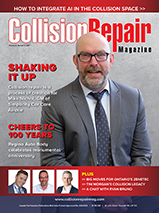DRIVING TOWARD A GREENER FUTURE
AN OVERVIEW OF SUSTAINABILITY IN THE AUTOMOTIVE INDUSTRY
The automotive industry has been making significant strides towards sustainability in recent years. As concerns about climate change and environmental impact continue to grow, automakers are embracing innovative solutions to reduce their carbon footprint and minimize resource consumption.
Four areas where automotive manufacturers are working on driving the industry toward a greener future include the use of recycled and bio-based materials and light-weight materials, the use of sustainable interior materials and sustainable metals.
On this note, one automaker that continues to push the environmental envelope is Kia. The South Korean automaker has continued to develop its “10 must-have sustainable items” in its cabin construction using bio-based materials such as mushrooms, hemp, corn and sugarcane.

 The automaker also offers interior materials made from sawdust and ‘bio-polyurethane’ leather as well as floor carpet made from 100 percent recycled PET bottles and recycled fishing nets.
The automaker also offers interior materials made from sawdust and ‘bio-polyurethane’ leather as well as floor carpet made from 100 percent recycled PET bottles and recycled fishing nets.
In a press release regarding its upcoming EV3, Kia says these natural fibres can also be used to help reduce vehicle weight and to add a natural tone to vehicle interiors.
In regard to the use of sustainable metals, according to Lithia Motors Inc., the global steel industry reclaims and reuses over 14 million tonnes of steel from retired cars every year to make over 8.5 million new vehicles. Similarly, the use of new steel made from recycled cars can reduce a vehicle’s structural weight by 25 percent and cut CO2 emissions by 15 percent. The increased use of recycled aluminum in automotive designs has also allowed for a more sustainable push for lighter vehicles. Aluminum is the material of choice for many EV manufacturers because of its capacity to reduce vehicle weight and offset often heavy battery packs.
In an announcement made earlier this year, BMW Group declared its intention to source aluminum with significantly reduced CO2 emissions from Rio Tinto’s hydro powered operations in Canada beginning in 2024. As such, while it can be easy to feel stuck in rising climate change news, it’s important to remember that positive developments are also being made. As knowledge, policy and material awareness continue to develop, the automotive industry likewise continues to ensure that the grass can truly be greener on the other side of change.





















